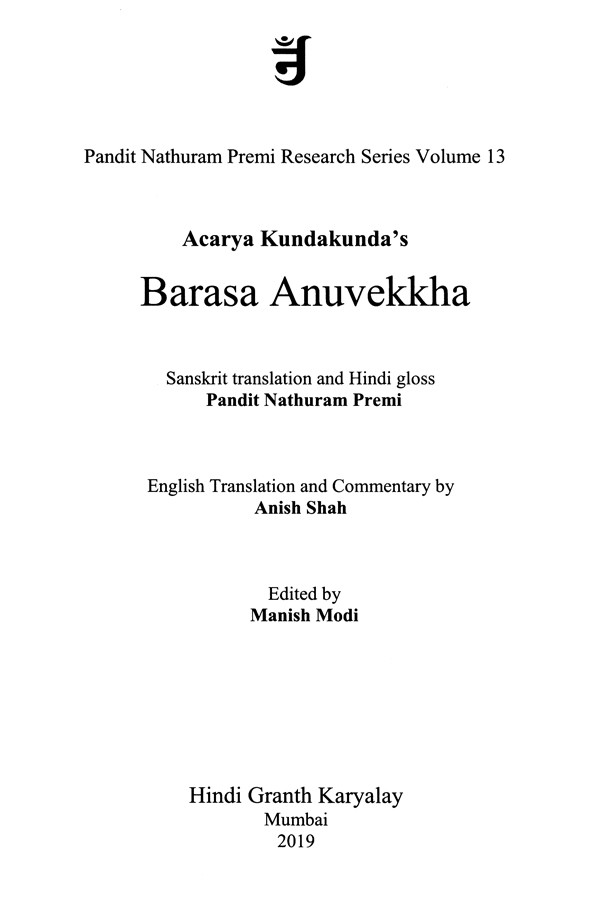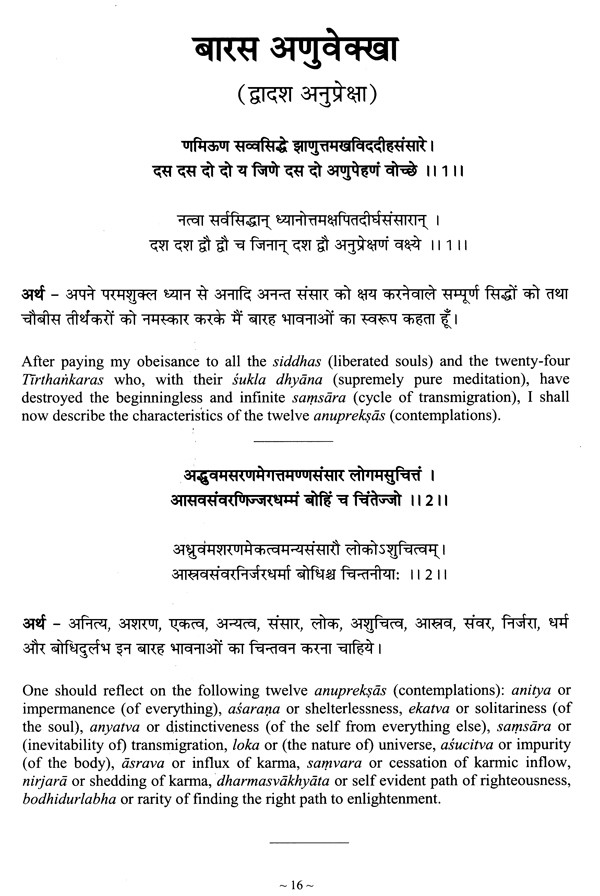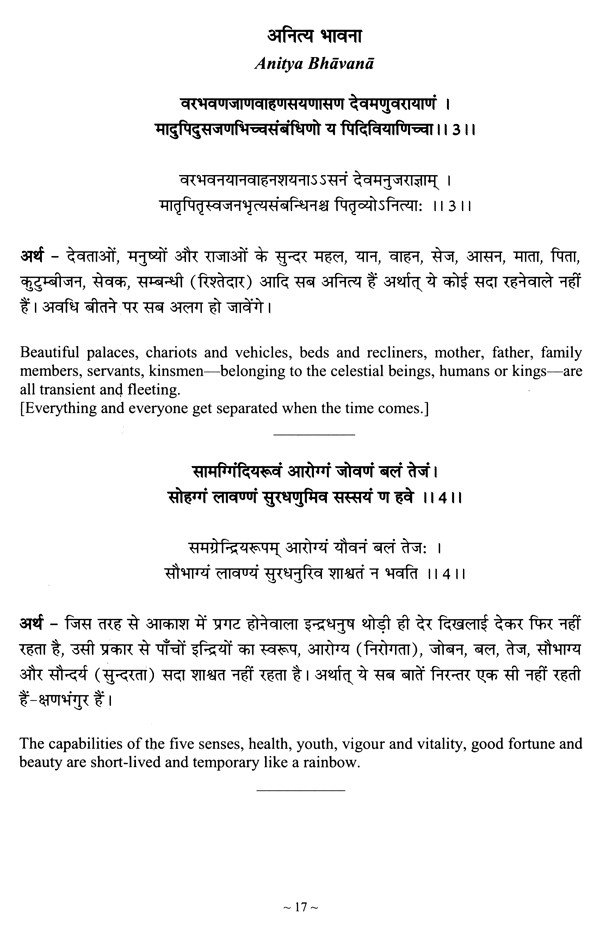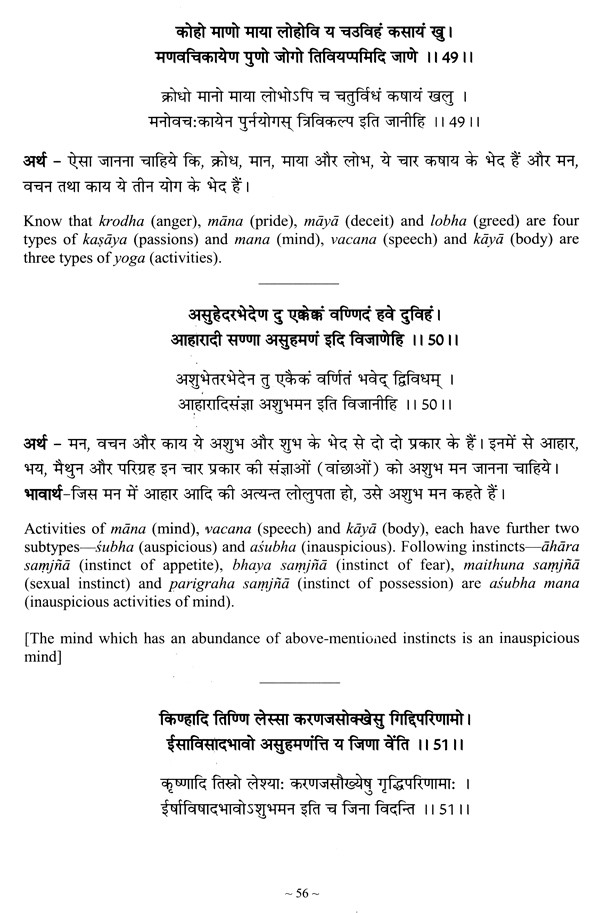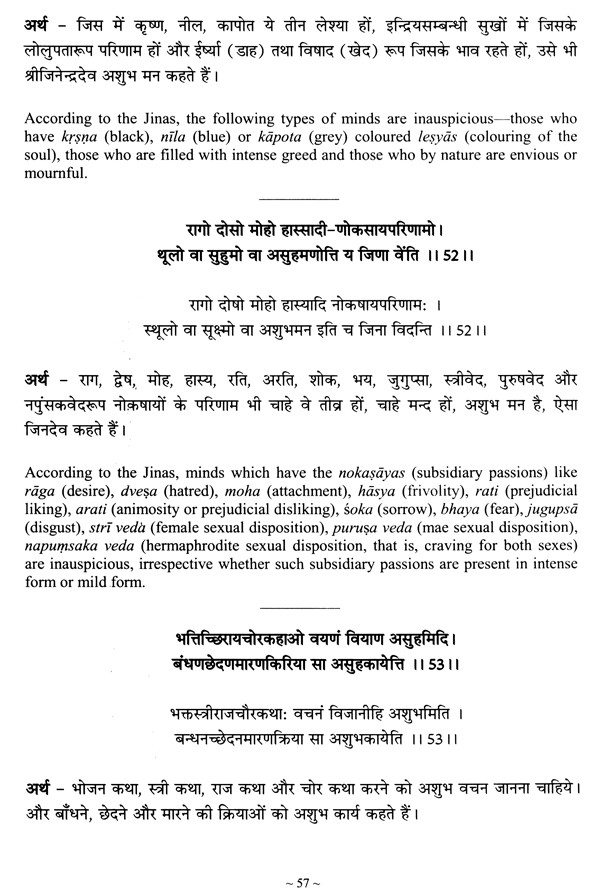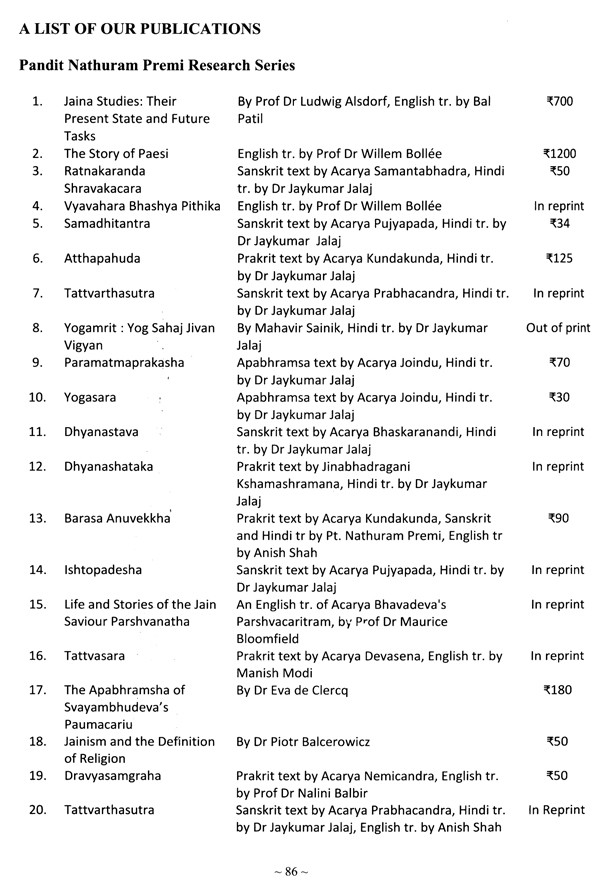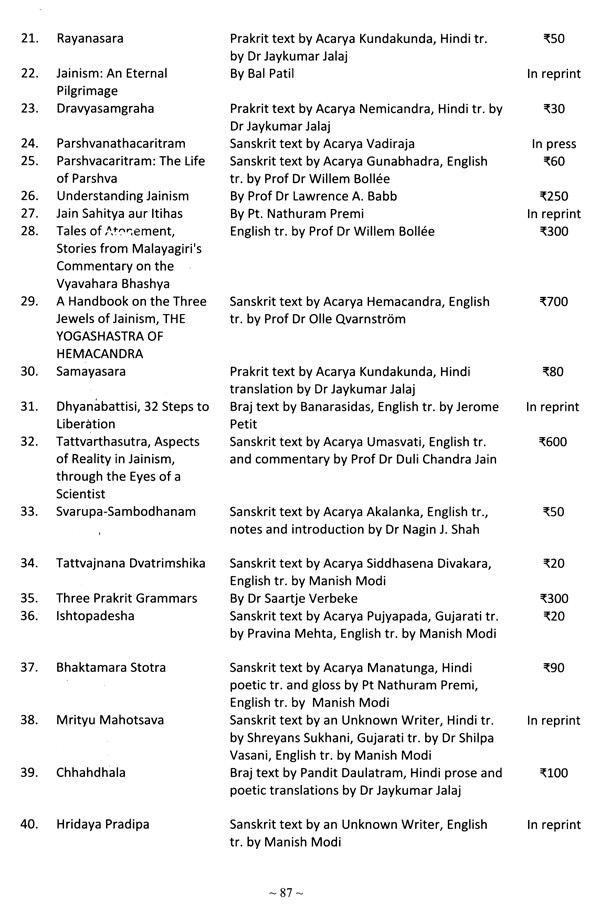
Acarya Kundakunda's Barasa Anuvekkha
Book Specification
| Item Code: | UAB324 |
| Author: | Acarya Kundakunda |
| Publisher: | Hindi Granth Karyalaya |
| Language: | Sanskrit, English, Hindi and Prakrit |
| Edition: | 2019 |
| ISBN: | 9788188769223 |
| Pages: | 88 |
| Cover: | PAPERBACK |
| Other Details | 9.50 X 7.00 inches |
| Weight | 170 gm |
Book Description
The most powerful inner directional force against samyak dersene is inundating desire. or the thirst for worldly pleasures. To get rid of mundane desires from their roots. contemplation and reflection on the twelve bovines is a must. Reflection on the twelve bevels is the most powerful tool to achieve a state of being where one transcends all mundane desires. This state serves as the foundation of the edifice called salvation.
This book contains twelve havens which are of utmost importance to reach a mental state free from mundane desire. One should read this book not only for gaining knowledge but in order to implement it in our day to day lives. He who remains engrossed in the twelve bovines is not perturbed by the problems. frustrations. trials and tribulations of life. He remains in a blissful state.
Acarya Kundakunda has been dated traditionally to the 2nd Century Coe He is said to have flourished in southern India, probably in the village of Kondakunde in the Anantapur district of modern Andhra Pradesh. Although he is considered as one of the pioneers of the Digambara Sangha, he is held in high esteem amongst all Jains regardless of their sectarian affiliations. His works have universal appeal and are enthusiastically read and studied by ascetics and laymen alike from all sects of Jainism.
Barasa Anuvekkha is a short treatise of 91 aphorisms including 4 aphorisms of the closing colophon. The last verse praises the work and its author. This is perhaps the only Jain text devoted exclusively to the twelve anupreksas. The anupreksas find brief mentions in many texts like the Tattvarthasastra and the Yogasastra. According to the Tattvarthasastra, contemplating on these twelve anupreksas results in samvara, that is, stoppage of karmic, influx. Acarya Hemacandra, the twelfth· century ascetic- scholar deals with anupreksas more extensively by devoting an entire chapter on twelve contemplations in his celebrated work Yogasastra. According to Hemacandra, constant reflection on these bhavanas results in detachment from worldly matters which in turn results in equanimity. With equanimity, passions (kansya) are eliminated resulting in mental purity. This finally culminates in knowledge of the self.
The importance of the twelve contemplations in general and this text in particular, can be estimated from the fact that Acarya Kundakunda considers incessant contemplation on these anupreksas as a way to liberation.
The author very skillfully and logically not only explains each and every bhavana but also explains the methodology and subject matter for contemplation. This text has all the hallmarks of Kundakunda as each bhavana is explained through the medium of two different viewpoints-ryavahara naya (external or practical viewpoint) and Nicoya naya (internal or real viewpoint). It is a text that can be read by anyone, beginner as well as advanced adherent.
Understanding of bhavana through the vyavahara naya refers to understanding how that particular bhavana affects the individual in his interactions with the outside world while walking on the path of liberation It tells which practices and vows an adherent should follow to internalize that particular bhavana. Understanding a bhavana from the Nicoya naya takes place when the adherent advances in his or her spiritual practice and realizes that the true nature of the soul is completely free from all external identifications and encumbrances. It is this realization of the true nature of the soul that ultimately results in liberation.
At this point, it would be worth dwelling on how Acarya Kundakunda has weaved the narrative of these bhavanas at the Nicoya naya level. He asks us to contemplate, understand and experience the soul from the viewpoint of the Nicoya naya in the following manner:
The soul should not be considered as the body and neither should the body be identified with the soul. Don't think of your body as possessing a soul.
Instead, contemplate that you are a soul coexisting with the body.
The soul has no mortal form. Hence it is neither human, nor animal, nor heavenly being, nor infernal being. Nor does it have a gender.
The soul is eternal. It can neither be killed nor be destroyed.
The soul-is not owned by the body. It is not wealth or social status enjoyed by the body. It is free from all such external identifications.
The soul is distinct from samsara, karmas and karmic states, all of which are extraneous to the soul.
The soul is not the intellect or the mind or the thought process. It is free from various mental and psychic states experienced by us in our worldly state. It is neither anger, nor pride, neither greed nor deceit.
This soul is neither a layman nor an ascetic. Hence, one should not get attached to the status or practices that are required to follow the sravaka dharma or muni dharma.
As understood from above, the soul is not material in nature. But if the soul is none of these, then what is it? How do we contemplate the true nature of our self? The learned Acarya tells us that the soul is intrinsically pure, undefiled by karmas and beyond any external identifications. Kundakunda further explains that knowledge and perception are the only attributes of the soul. In reality, the soul is the abode of infinite and eternal bliss. We can attain the true state of the soul, that is, inmate knowledge, 'infinite perception and infinite bliss, only when the veil of ignorance caused by karmas is lifted allowing the soul to shine through in its original and pristine glory.
Book's Contents and Sample Pages
